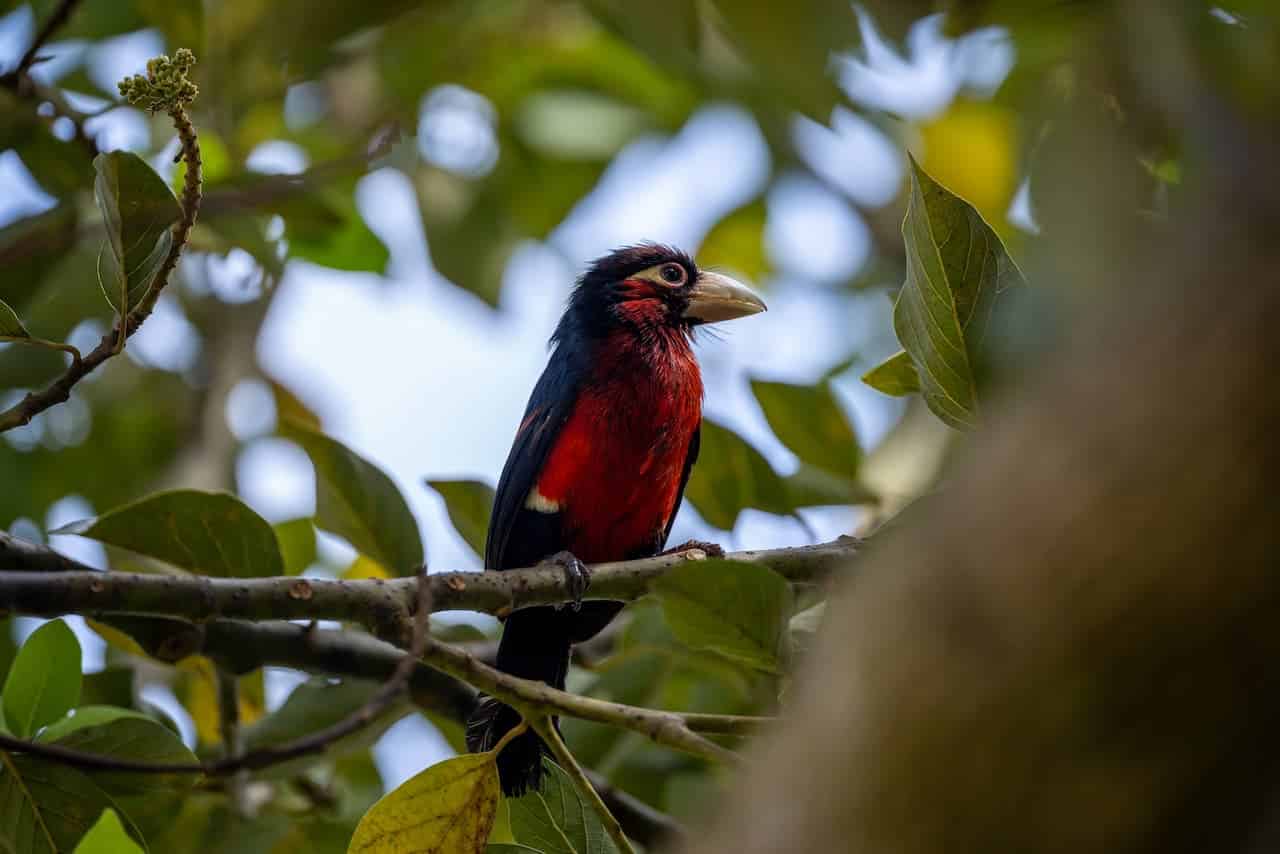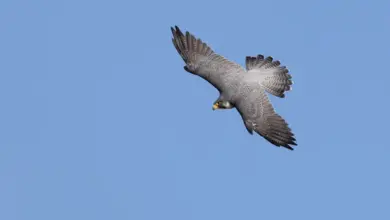The Thick-billed Murres or Bruünnich’s Guillemots (Uria lomvia) is a bird in the auk family (Alcidae).
This bird is named after the Danish zoologist Morten Thrane Brünnich. The very deeply black North Pacific subspecies Uria lomvia arra is also called Pallas’ Murre after its describer.

Distribution / Range
It breeds on coasts and islands in the High Arctic of Europe, Asia and North America, where it is one of the most numerous bird species.
Description
At 40€“44 cm in length, with a 64€“75 cm wingspan, very similar in size to the closely related Common Guillemot (or Common Murre, U. aalge). The Pacific race (U. l. arra) is larger than the Atlantic race, especially in bill dimensions. Since the extinction of the Great Auk in the mid-19th century, the murres are the largest living members of the Alcidae.
Adult birds are black on the head, neck, back and wings with white underparts. The bill is long and pointed. They have a small rounded black tail. The lower face becomes white in winter. This species produces a variety of harsh cackling calls at the breeding colonies, but is silent at sea.
They differ from the Common Murre in their thicker, shorter bill with white gape stripe and their darker head and back; the “bridled” morph (genetic mutation) is unknown in U. lomvia – a murre has either a white eye-stripe, or a white bill-stripe, or neither, but never both; it may be that this is character displacement, enabling individual birds to recognize conspecifics at a distance in the densely-packed breeding colonies as the bridled morph is most common by far in North Atlantic colonies where both species of guillemots breed. In winter, there is less white on the Thick-billed Murre’s face. They look shorter than the Common Murre in flight. First year birds have smaller bills than adults and the white line on the bill is often obscure, making the bill an unreliable way to identify them at this age. The head pattern is the best way to distinguish first-year birds from Common Murres.

Ecology
The Thick-billed Murres birds breed in large colonies on coastal cliffs, their single egg being laid directly on a cliff ledge. A description of the species breeding biology is given in detail by Gaston and Nettleship (1981).
Migratory Patterns
They move South in Winter into northernmost areas of the north Atlantic and Pacific, but only to keep in ice-free waters. They are rare in temperate waters.
As a vagrant
Brünnich’s Guillemot is a rare vagrant in European countries south of the breeding range. In Britain, over 30 individuals have been recorded, but over half of these were tideline corpses. Of those that were seen alive, only three have remained long enough to be seen by large numbers of observers. All three were in Shetland – winter individuals in February 1987 and November/December 2005, and a bird in a auk colony in summer 1989. The 1989 and 2005 birds were both found by the same observer, Martin Heubeck.
The species has been recorded once in Ireland, and has also been recorded in the Netherlands. In the western Atlantic, they may range as far as South Carolina, and in the Pacific to California. Before 1950 large numbers appeared on the North American Great Lakes in early winter, passing up the St. Lawrence River from the East coast. Such irruptions have not been seen since 1952.
Flight and Feeding Characteristics
The Thick-billed Murres flight is strong and direct, and they have fast wing beats due to the short wings.
These birds forage for food like other auks, by using their wings to ‘swim’ underwater. They are accomplished divers, reaching depths of up to 150 m and diving for up to four minutes at a time; usually however birds make either shallow short dives or dive down to 21€“40 m for longer periods. Adults mainly eat invertebrates and a few fish and provision their chicks with fish, squid, some crustaceans and other small invertebrates. They carry these prey items to their chicks, one at a time, in their bill. Birds will make long trips to get to favorite feeding grounds; while they usually forage several dozen km from their nest sites, they often travel more than 100 km to fish.
The diving depths and durations regularly achieved by these birds indicate that they, and similar auks, have some – as yet unknown – mechanism to avoid diving sickness and lung collapse when surfacing. It is postulated that Auks temporarily absorb excess gases into the vascular structure of their bones. From there, it is gradually released from temporary storage in a controlled process of decompression.

Status and conservation
Egg harvesting and hunting of adult birds are major threats in Greenland, where populations fell steeply between the 1960s and 1980s. In the Barent Sea region, the species has declined locally, due to influences associated with polar stations in Russia. Fisheries may be also be threat, but because Thick-billed Murres are better able to utilise alternative food sources the effect of over-fishing is not as severe as on the Common Murre. Pollution from oil at sea exerts another major threat. Murres are among the seabirds most sensitive to oil contamination. Incidental mortality brought on by entanglement with fishing gear is also important cause of populuation decline.
Thick-billed murres are closely associated with sea-ice throughout the year. Consequently, some scientists believe that climate change may be a threat to this Arctic-breeding species. However the species seems adaptable. Populations at the Southern edge of their range switched from feeding on ice-associated Arctic cod to warmer-water capelin as ice break-up became earlier. Dates for egg-laying advanced with the earlier disappearance of ice. The growth of chicks is slower in years when ice break-up is early relative to egg-laying by the murres. In extremely warm years, mosquitos and heat kill some breeders.
Copyright: Wikipedia. This article is licensed under the GNU Free Documentation License. It uses material from Wikipedia.org … Additional information and photos added by Avianweb.
Please Note: The articles or images on this page are the sole property of the authors or photographers. Please contact them directly with respect to any copyright or licensing questions. Thank you.


